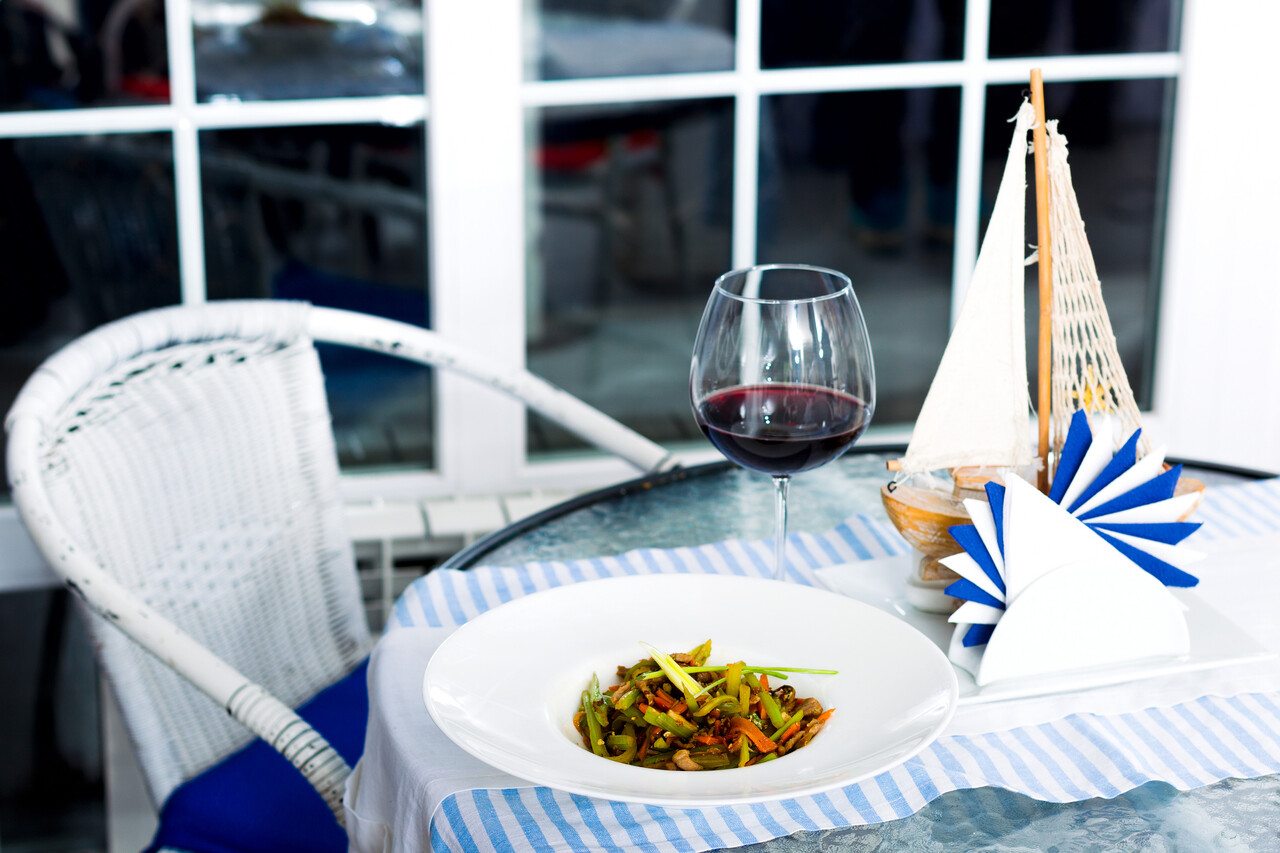14 Ways to Make Breakfast Eggs Less Boring

Many people consider eggs to be a breakfast staple, but consuming the same fried or scrambled egg every morning can quickly become monotonous. Fortunately, eggs are very adaptable; you can make a boring egg into something interesting and delectable by making small adjustments to technique, flavour, texture, or presentation. Here are 14 creative ways to add interest to your breakfast eggs that use safe methods and well-known ingredients that work everywhere. Let’s get started and make your egg mornings a reason to get out of bed.
1. Try Different Cooking Styles (Poached, Soft‑Boiled, Shirred)
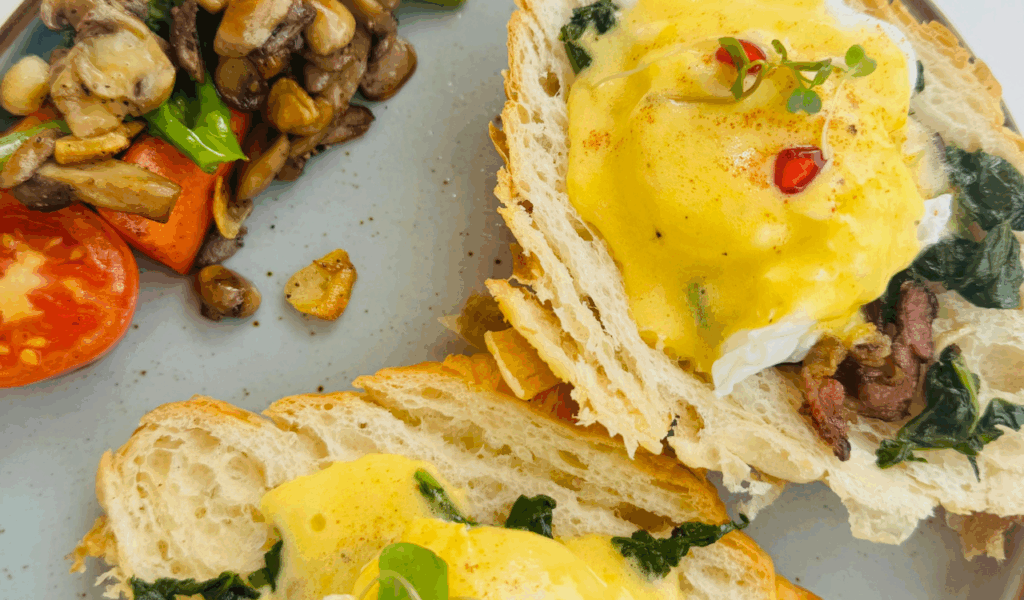
Instead of always frying or scrambling, try poaching, soft-boiling, baking in a dish (shirred), or even steaming to alter the texture and flavour. The delicate white and runny yolk of poached eggs, which are cooked in gently simmering water, combine well with toast. The firm whites and jammy yolks of soft-boiled eggs make them ideal for dipping or seasoning. In small dishes, shirred eggs are baked with additional ingredients like cream or herbs. You can enjoy eggs in different ways and with different textures depending on the style.
2. Add Aromatics and Spices Early On

The flavour of eggs can be enhanced by adding fresh herbs, onions, garlic, shallots, or spices like turmeric, cumin, or smoked paprika early in the cooking process. Aromatics release their essential oils and create a flavourful base when they are first sautéed gently. After that, you either crack or add the beaten eggs, allowing the flavours to develop. Your palate may be surprised by spices like chilli flakes, black pepper, or even a pinch of nutmeg (for some egg-custardy recipes). By using this method, your eggs will taste more than just “eggs plus salt.”
3. Use Mix‑Ins to Vary Texture & Flavor
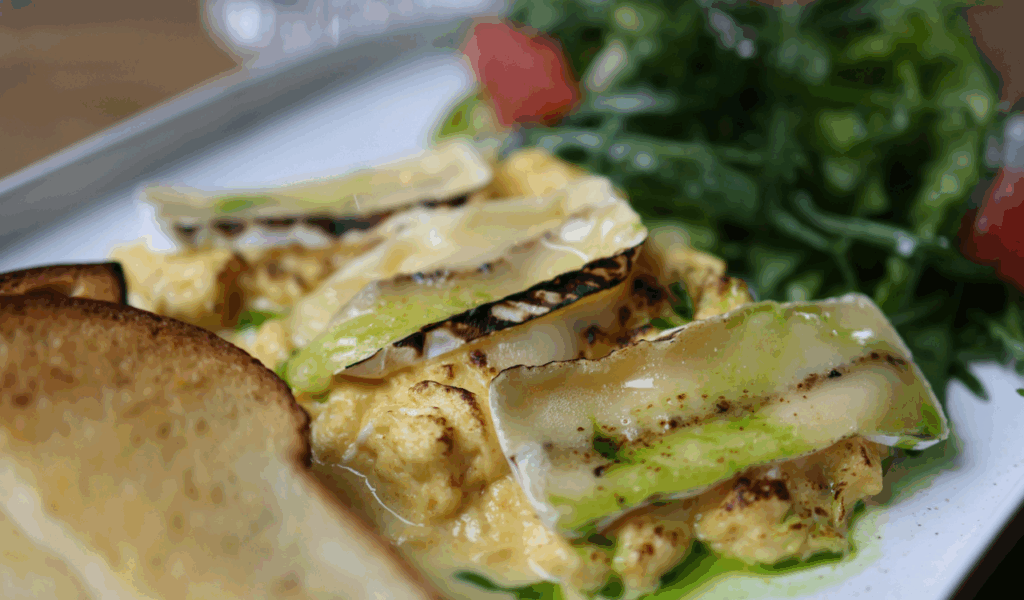
The profile of an egg dish can be significantly altered by adding ingredients like chopped vegetables (bell peppers, tomatoes, spinach, mushrooms), crumbled cheeses (feta, cheddar, goat), or even tiny pieces of cooked beans, smoked salmon or ham. Every bite is made more thrilling by the contrast of textures—crisp veggies, creamy cheese, and maybe some salty meat. Additionally, mix-ins add nutrients, extend the dish, and enhance the appearance of the eggs. To prevent the eggs from becoming soggy or watery, make sure that the moisture from the vegetables is drained.
4. Finish with Fresh Herbs or Greens
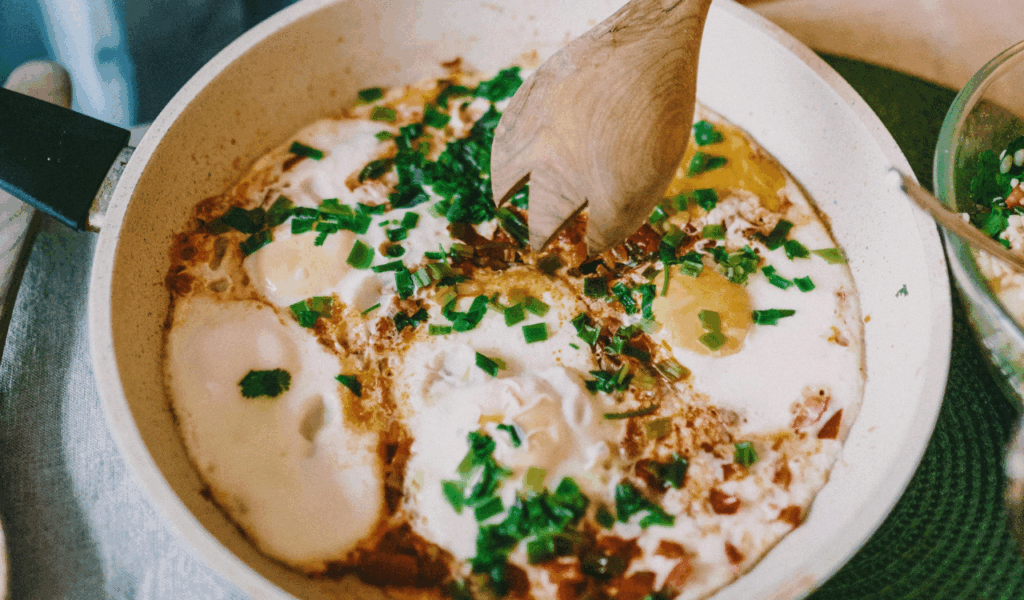
Adding fresh herbs or greens after cooking eggs enhances their colour and flavour. Try microgreens, dill, cilantro, parsley, or chives. When added right before the eggs are done cooking, greens like spinach or baby kale provide a subtle crunch and additional nutrients. The final herbs maintain their colour and scent. A peppery note can even be added by scattering some fresh watercress or rocket on top. Compared to plain cooked eggs, these finishing touches give eggs a more complex and fresh flavour.
5. Play with Heat & Fat

Changing the temperature and cooking fat can have a significant impact on the quality of your eggs. Olive oil or a mild oil adds a subtle flavour, while butter adds richness and browning. Eggs cooked on low heat (gentle heat) produce creamy, custard-like curds; eggs cooked on slightly higher heat (not too high) produce crisp bits or golden edges. Eggs can also be finished with gloss and mouthfeel by adding a tiny bit of fat at the end, such as a spoonful of flavoured oil or a pat of butter. These minor adjustments result in significant variations in flavour and texture.
6. Try Global Flavor Inspirations
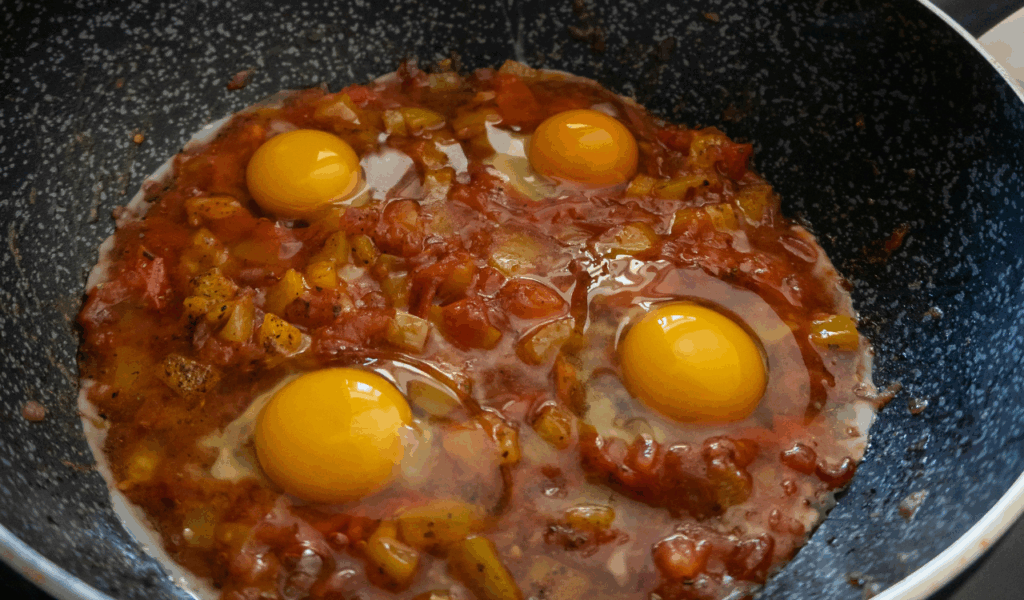
To add some flair to your eggs, incorporate flavours from other cuisines. Shakshouka, for instance, is a rich and robust dish made with eggs poached in a spicy tomato pepper sauce. Eggs can enter savoury spice zones by adding curry powders, salsa verde, or harissa. Even garnishes like pickled veggies, fermented sauces, or kimchi add heat, tang, and umami. These ideas push eggs outside of their typical, milder comfort zone and provide you with inventive, novel flavour combinations without requiring complex methods.
7. Make Egg Muffins or Egg Cups

Egg muffins, also known as egg cups, are baked eggs in muffin tins or other small dishes that are frequently combined with cheese, meats, and vegetables. They’re tidy, portable, and entertaining to look at. The inside can be stuffed with treats, and the edges get crispy (from the tin). Because you can bake a batch in advance, store it in the refrigerator, and then reheat it, these are great for meal prep. Additionally useful for varying flavours, regulating portion sizes, and even incorporating leftovers into the mix. Excellent if you want something new more than once a week.
8. Explore Sweet & Savory Combinations
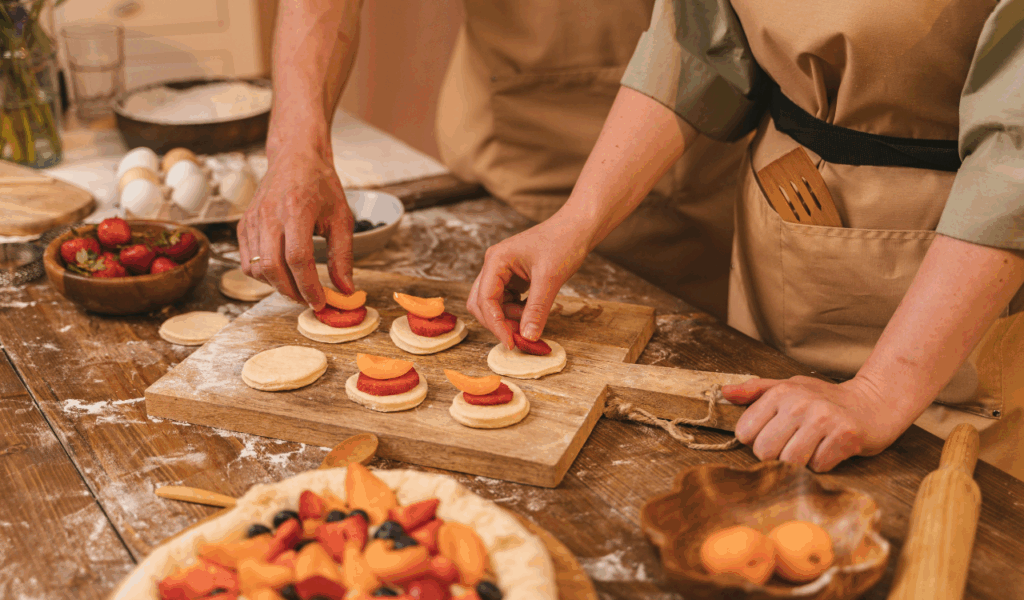
When combined with sweet ingredients in savoury dishes, eggs can really shine. Consider grilled peaches with scrambled eggs, sautéed apples or pears on the side, or bacon and eggs with a drizzle of maple syrup. Even roasted sweet potato cubes, caramelised onions, or fruit chutney provide contrast. By balancing fat and salt, sweetness adds depth to the flavour profile. This is about subtle interplay, allowing sweetness to complement rather than overpower, not about turning eggs into dessert.
9. Incorporate Cheese or Creamy Elements

Eggs gain richness and a creamy texture when cheese or dairy is added. Scrambled eggs can be made fluffier by whisking in a small amount of cream or milk; tang or molten pockets can be added by adding soft cheeses like feta, goat, or ricotta. Harder cheeses that are grated, such as aged cheddar or Parmesan, add flavour and melt. Even a final spoonful of Greek yoghurt or sour cream adds creaminess and softens the flavour. Pay attention to how much salt is in cheeses, or cut back on salt as necessary.
10. Serve Over or With Starchy Bases
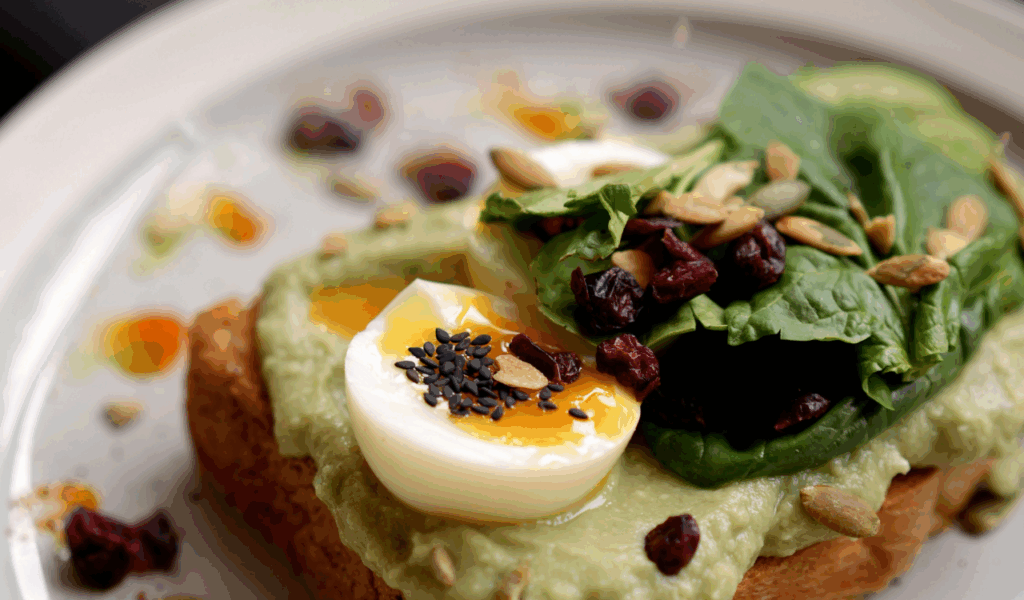
A single egg can be made into a complete, filling meal by serving it over or with toast, tortillas, pita, rice, or sautéed potatoes. For example, eggs served on sweet potato hash or roasted potatoes, or eggs over a rice bowl with vegetables. Delight is added by toast or bread underneath that has been soaked in sauce or yolk. This allows the eggs to absorb flavours and textures. The contrasts of hot rice, soft bread, and crisp edges make breakfast more interesting and satisfying.
11. Use Sauces, Drizzles & Relishes
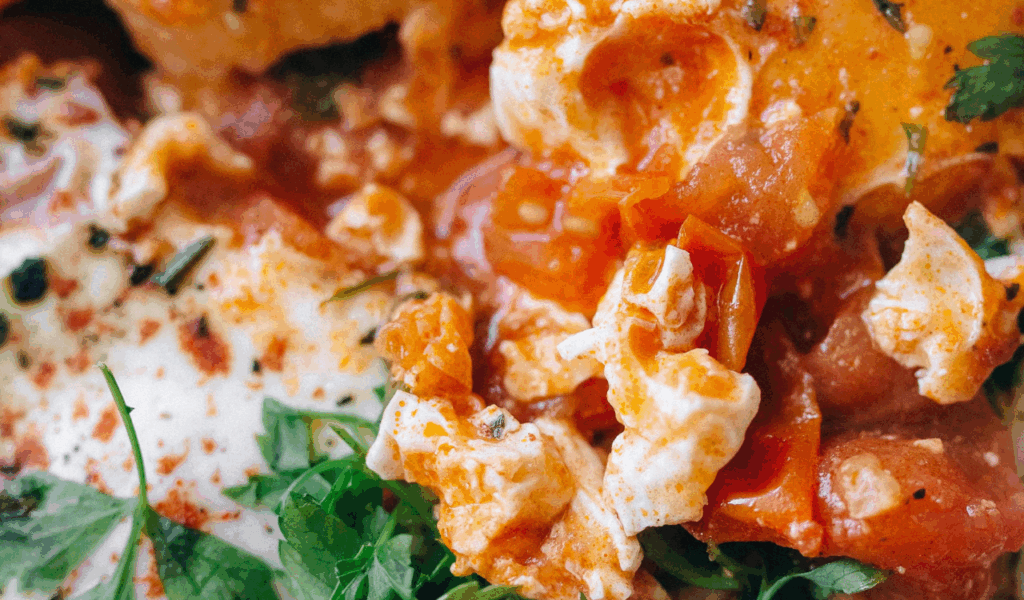
The appeal of eggs can be significantly increased with a carefully selected sauce or relish. Consider hollandaise, pesto, salsa, chimichurri, hot sauce, chilli oil, or even salsa verde. Pickled onions, jalapeños, or a tomato-based quick pickle are examples of relishes that add acidity, brightness, and crunch. Your palate is awakened by the contrast between a rich egg yolk and a spicy sauce or tangy relish. Aroma is produced by drizzling oil infused with herbs or garlic. You can adjust the amount of heat, tang, or spice each morning with these toppings.
12. Play with Texture: Crispy, Runny, or Custardy
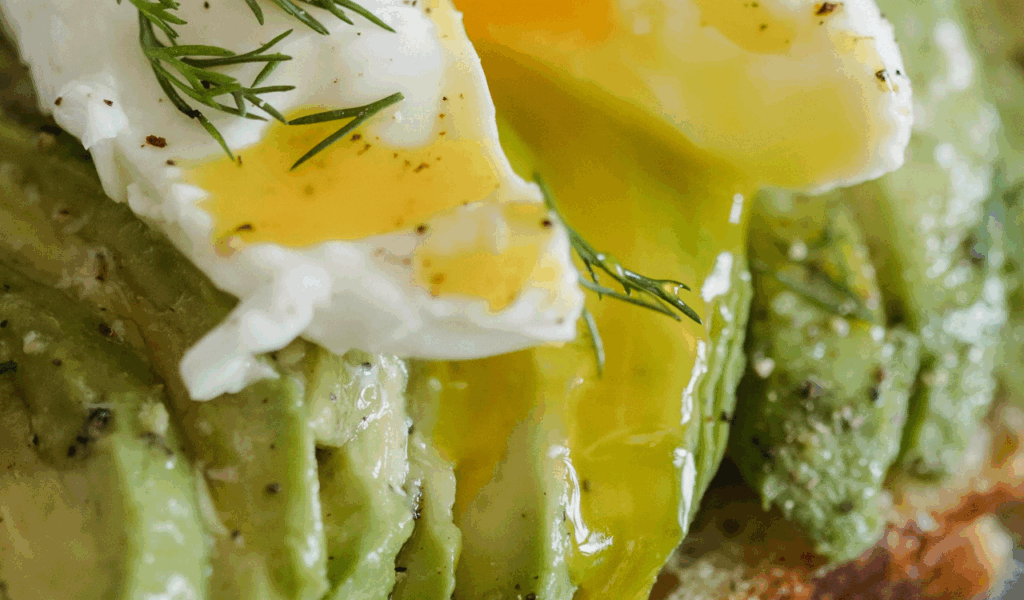
Food is often exciting because of its variety of textures. Try crispy edges, soft curds, and running yolks. Cook scrambled eggs until just underdone for creaminess; leave the yolks runny in the centre so they break over toast; and crisp up the edges of fried eggs so the whites have crunchy bits. The texture of custard-style baked egg dishes, such as strata or baked eggs with cream, is smooth and firm. Caramelised flavour is added even with a little browning. Every bite is intriguing due to the interaction of textures.
13. Presentation & Garnish Matter
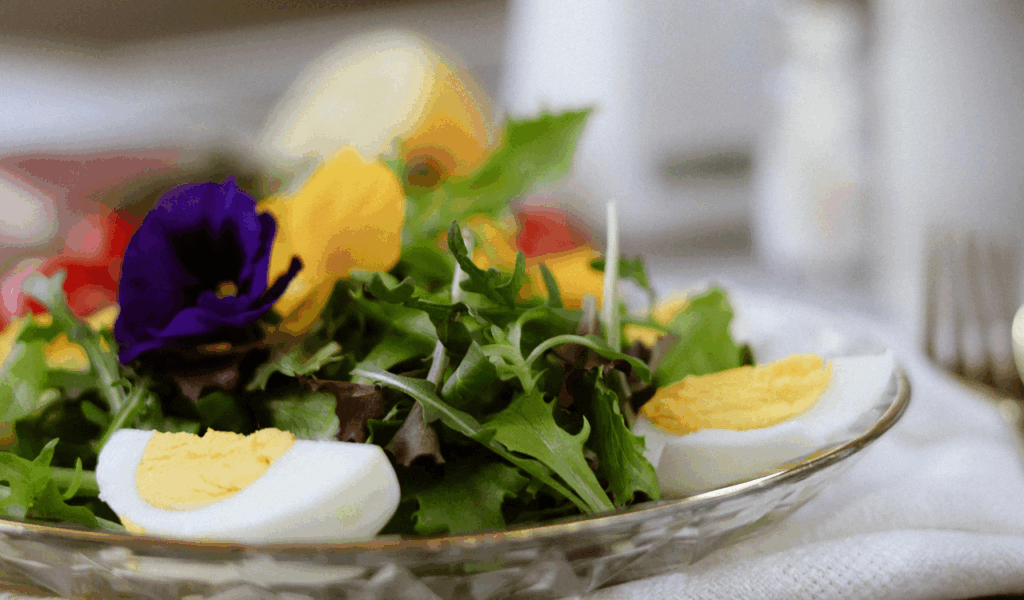
Egg presentation has the power to improve the experience. Use colourful garnishes such as microgreens, chopped herbs, radishes, cherry tomato halves, and edible flowers; stack eggs with ingredients; and slice or fold omelettes neatly. To make the plate stand out, use contrasting colours. Visual appeal can even be added with a dash of freshly cracked pepper or flaky sea salt. Serve in attractive dishes. Changing the presentation makes the dish feel special, but monotony is often the source of the “boring” feeling.
14. Prep Ahead & Make It Easier on Busy Mornings

Time pressure is one of the reasons eggs seem dull. Prepare in advance: chop vegetables, cheese, and herbs; prepare batches of egg muffins; soft-boil eggs in advance; prepare batters the night before; and prepare sauces or drizzles. You can put things together or cook them quickly in the morning, which lets you play around with flavours and textures. This allows for creativity even on busy mornings and lessens the chance that you will rely on the same old scramble.



